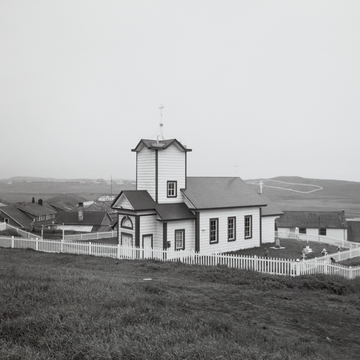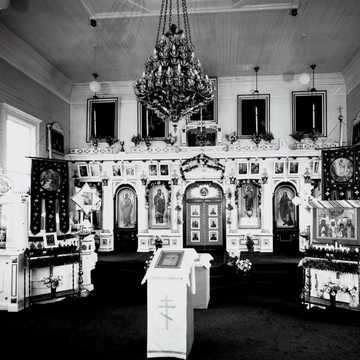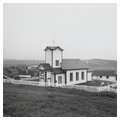The oldest building on the island of Saint Paul, the church is a significant expression of the Russian-influenced Aleut culture. Although under U.S. domination for nearly fifty years when the church was built, the Aleuts held onto their faith, commissioning this church with their earnings from the seal harvest.
Constructed to replace an earlier building, the church was designed by Nathaniel Blaisdell, an architect from San Francisco. It is unlikely that Blaisdell ever visited Saint Paul; the priest there arranged with the agent of the North American Commercial Company, who was based in San Francisco, for its construction. Bishop Tikhon of the Russian Orthodox Church approved the drawings before construction began in 1905. Four carpenters were sent from San Francisco to construct the church; they were aided by the church members themselves.
Originally, the church was far more ornate than at present. In the 1980s, cement asbestos
The original Classical Revival detailing of the church—such as corner pilasters, cornice returns on the gable ends, and entablatures over every opening—has been lost on the exterior but is maintained on the interior, which features a spectacular iconostas. Divided into seven bays, the mahogany iconostas (which was retained from the previous church) features fluted, engaged Corinthian columns set on paneled bases. The central doors in the iconostas, the royal doors have latticework and a sunburst motif in the transom light. The doors are unpainted mahogany, while the iconostas itself has been painted white with gold trim to set off the icons. Above the iconostas, five large paintings emphasize the height of the nave.
A striking contrast to the remote, windswept island that can only be described as bleak, the sumptuousness of the interior of this church is startling. A building of such color, light, and beauty is tangible evidence of the persistence of faith and culture.



















